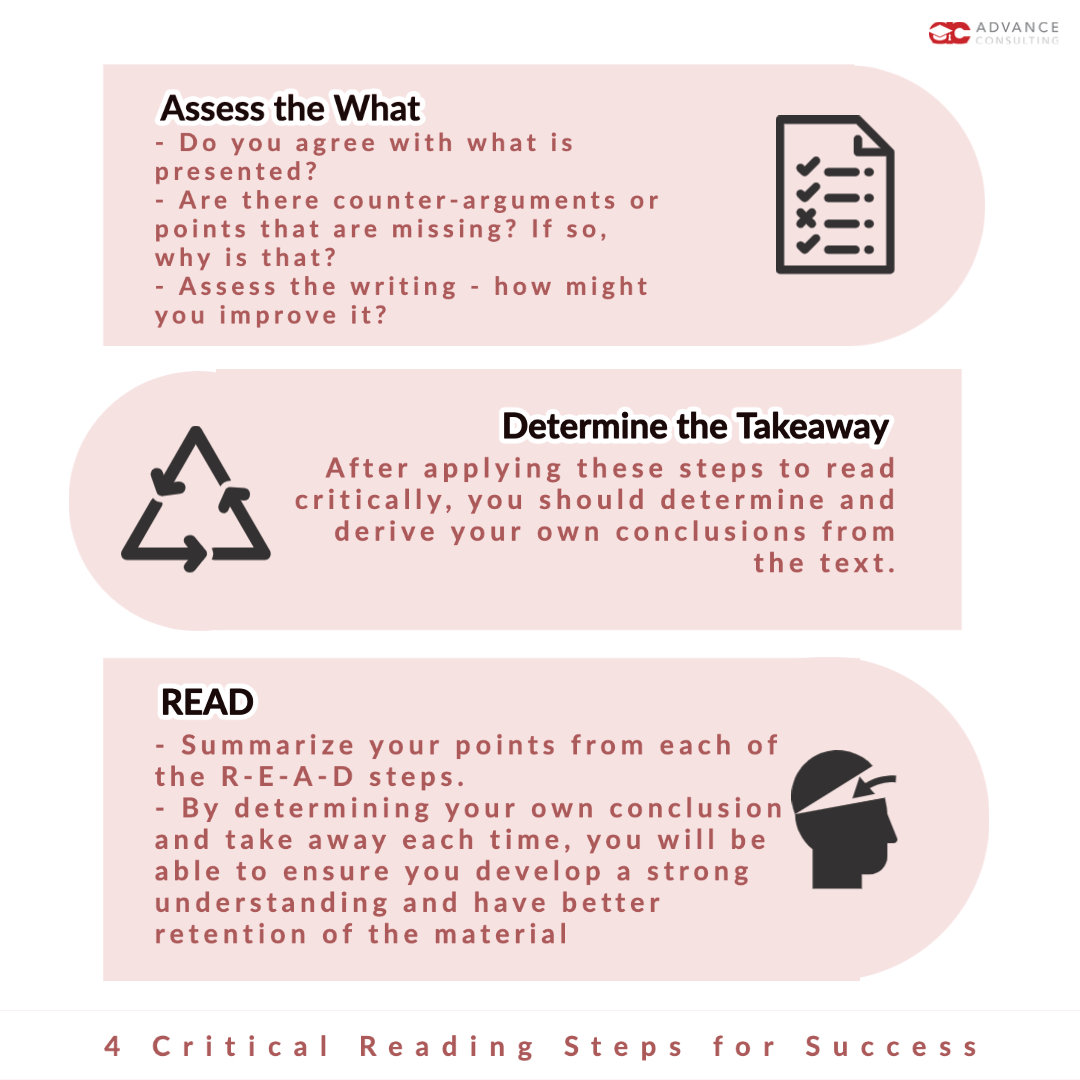Critical Reading is an active and reflective skill, requiring the reader to make a judgement on how the text is presented. As mentioned in the previous article on how Reading helps you succeed, the ability to critically read helps set you up for academic and personal success.
To help you practice Critical Reading in all texts that you read, we have come up with the READ acronym:
R - Recognize the Why
When first skimming through the text, it is important to recognize the purpose or intent of the writing. Understanding why the author has written that piece helps provide context and great comprehension.
E - Enquire the How
Once you have determined the “Why” and purpose, it is important to identify how the author achieved doing so.
Here are some questions you might consider:
What tools are used?
What arguments are made?
Why are arguments presented a certain way?
Annotating your text might help you to identify and enquire more deeply.
Here are some annotating tips as suggested by Harvard for their first year students.
A - Assess the What
Do you agree with what is presented? Are there counter-arguments or points that are missing? If so, why is that? Assess the writing - how might you improve it?
Next, look towards the actual content of what the author wrote and what the text presents.
D - Determine the Takeaway
After applying these steps to read critically, you should determine and derive your own conclusions from the text.
It is important to summarize what you have read and review what you analyzed from the READ steps
(1) R - Recognize the Why
(2) E - Enquire the How
(3) A - Assess the What
and (4) D - Determine the Takeaway
into a few concise sentences.
By determining your own conclusion and take away each time, you will be able to ensure you develop a strong understanding and have better retention of the material
Additional Resources
Harvard University Critical Reading strategies for first year students:
University of North Carolina (UNC) Chapel Hill Academic Reading Strategies: https://writingcenter.unc.edu/esl/resources/academic-reading-strategies/
Yale McGraw Center for Teaching:
Critical Reading Exercise by Dr. Peter Watkins from University of Cambridge:
https://www.cambridge.org/elt/blog/2018/01/24/developing-critical-reading-skills/



